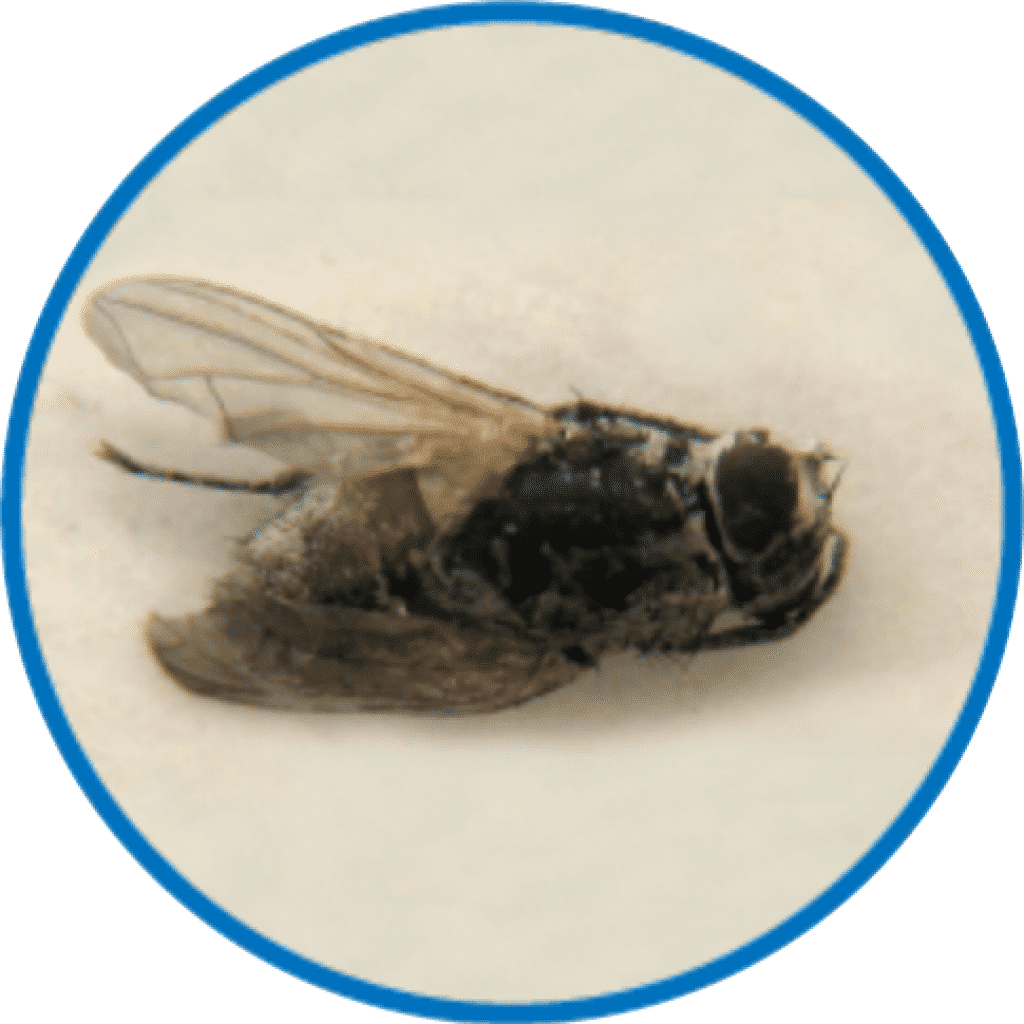COMMON INSECTS - Flies
Description
Adults are about 3 – 6mm long, with the female being larger than the male. They are dull gray, with the face having 2 velvety stripes.
Biology
The adult female will lay a total of 75 – 150 eggs per batch and will lay 5 – 6 batches in her lifetime. The eggs hatch in less than a day. The maggots (larvae) will develop in 3 – 7 days. Adults will live between 15 – 25 days. House flies will eat anything and regurgitate fluids to turn their food into liquid to feed.
Habit
A Females seek almost any warm, moist material with sufficient food for larval development for egg-laying purposes. Daytime house flies tend to rest less than 5 feet from the ground on walls, floors, and various objects. At night they rest primarily above 5 feet on ceilings, walls, plants, etc. usually near their daytime food source.

Description
Phorid flies are similar to fruit flies and have a hump back and will run first before taking to flight which makes them easier to tell between fruit flies. Their colour ranges from black to yellowish brown and their sizes can be from 1 to 6mm.
Biology
They have a 4-stage lifecycle and the females lays between 1 – 100 egg; 750 in her lifetime. The eggs are laid on the larval food source. Development time can be between 14 – 37 days.
Habit
Phorid flies breed in moist decaying matter and in drains and can be found throughout the home where plants, flowers, fruit, vegetables are. They can also be found around deceased animals and corpses.

Description
Fruit flies have bright red eyes and are yellow-brown in colour. They are up to 3mm in size.
Biology
The fruit fly egg is about half a millimeter long. It takes about one day after fertilisation for the embryo to develop and hatch into a worm-like larva. The larva eats and grows continuously. Development time can be as little as one week.
Habit
Fruit flies are especially attracted to ripened fruits and vegetables in the kitchen. But they also will breed in drains, garbage disposals, empty bottles and cans, rubbish containers, mops and cleaning rags. All that is needed for development is a moist film of fermenting material.

Description
The entire body and wings of the moth fly are covered with tiny hairs, giving it a moth-like appearance. It generally looks like a small fly with fat wings however a closer look will reveal its unmistakable moth-like appearance. Moth flies are no more than 3mm in length including the wings. They are usually black in colour.
Biology
Moth flies lay eggs in a mass of 30 to 100. These eggs hatch in less than 48 hours. The larvae and pupae of the moth fly live in the thin film found in drains, septic tank field lines or filter stones. The larvae feed on sediment, decaying vegetation and microscopic plants and animals. Development time from egg to adult is approx. 14 days.
Habit
Moth flies can be found in sinks and bathtub drains and emerging adults found resting on the walls. They breed in large numbers in sewer plants and are easily blown towards homes by the wind. Their small size enables them to penetrate ordinary fly screens.

Description
Adults are about 12mm in length. They are light brown to tan except for 2 dark longitudinal stripes on the head shield. Females are darker than males. They rarely fly.
Biology
Adults live about 7 to 10 days and deposit eggs on the moist soil surface or in soil cracks. Females lay up to 100 to 300 eggs in batches of 2 to 30 each in decaying organic matter. Eggs hatch in 4 to 6 days; larvae feed for 12 to 14 days. The pupal stage is about 5 to 6 days.
Habit
Fungus gnats reproduce in moist, shaded areas in decaying organic matter such as leaf litter. The life cycle is about four weeks. Larvae not only feed on fungi and decaying organic matter, but on living plant tissue.


